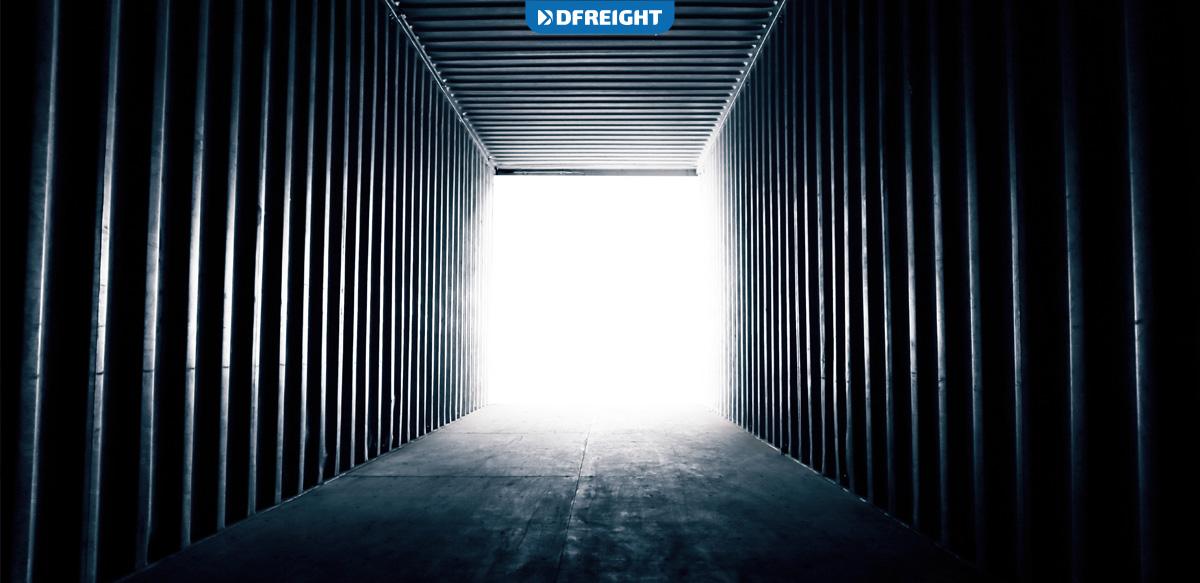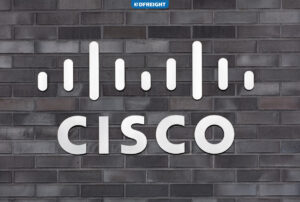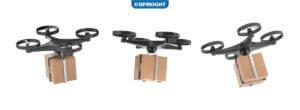If you’re shipping products in any quantity via ocean freight, you’ll soon be asking whether LCL (Less Than Container Load) or FCL (Full Container Load) shipping makes the most sense for your shipment or if you are a beginner, you may ask what are FCL and LCL shipping methods? Depending on a variety of criteria such as the size and amount of your shipment, as well as how fast you want it, one of the FCL and LCL shipping methods may be good for you.
However, there is a lot to consider and comprehend about FCL and LCL shipping before making a decision. If you’re unsure which container shipping method to use, read our article to discover all you need to know in detail.
We’ll go over everything you need to know about FCL and LCL shipping, including how much they cost, how long they take, and the services DFreight offers to make cargo shipping easier for you.
Table of Contents
What Are FCL and LCL Shipping Methods?
When shipping products across the sea by container, the two main ways are FCL and LCL shipping methods. FCL stands for full container load, whereas LCL is for less than container load.
FCL entails transporting your goods in a full container, as the name implies. This option allows you to pay for the full container, ensuring that just your goods take up the entire space. Shippers that have a significant number of products, enough to fill a 20 or 40-foot container, frequently choose this option. However, many people choose FCL when their products are close enough to fill the container that the price difference is insignificant. FCL shipping is used for shipments weighing more than 10 CBM.
LCL involves sharing container space with other people’s shipments. While FCL allows you to have complete control over an entire container, LCL combines your cargo with that of others. People exporting lower amount or searching for more flexible shipping alternatives frequently look into shipping less than a container load. LCL is usually used for shipments weighing between 1 and 10 CBM.
FCL vs. LCL; What Are the Differences?
FCL and LCL shipping methods have a lot of basic distinctions. Their main difference is in the space they provide for your cargo. With LCL shipping, you’re generally sharing space with other people’s shipments, but with FCL shipping, you’re not. Other distinctions to be aware of are as follows:
Cargo Speed
LCL shipments take somewhat longer to arrive than FCL shipments. This is due to the fact that your products will need to be combined with those of other shippers, which will take extra days. This covers the time spent at each port processing, loading, unloading, and separating the commodities. Before leaving the port, the consignment must wait for other goods heading to the same destination. FCL, on the other hand, takes substantially less time because the entire cargo is delivered straight to you.
Cargo Volume
LCL shipping is good for cargoes with a volume of less than 10 CBM to 1 CBM. If you are shipping less than 1 CBM (and your cargo weighs less than 200 kilos), air freight is a more cost-effective option. However, if you’re shipping more than 10 CBM or if you want to ship an oversized cargo, the price difference between a full container load and a less than container load may be insignificant.
Cargo Cost
Whether your product fills the container or not, you must pay the price of a full container when shipping FCL. There is no requirement for the quantity of your cargo before you can utilize FCL. However, because you are paying per CBM for your cargo, LCL may be more expensive. CBM is a unit of measurement that indicates how much space your package requires in FCL and LCL shipping methods. As a result, if you’re delivering products that can’t be stacked or take up a lot of room, you’ll have to pay for the space that other shipments don’t utilize because of your goods. There is also an extra fee to consider, which is known as handling fee.
Flexibility
In comparison to FCL, LCL is extremely adaptable. LCL is perfect if you need to divide your supplies over multiple destinations. However, if you need to ship via FCL, you’ll have to factor in additional costs for storage, unloading, sorting, and transportation to the delivery location.
Cargo Security
FCL has a higher level of security than LCL. Because it is handled less than commodities shipped via LCL, there is a reduced chance of damage, theft, or loss. Cargo safety is an important factor that can sometimes determine FCL and LCL shipping methods.
Container Availability
Receiving FCL shipments at peak seasons, such as the run-up to Chinese holidays, can be difficult. Because you don’t have to wait for a full container to become available, LCL could be a better and even faster choice in this case; there are also many similar factors affecting the shipping rate for FCL and LCL shipping that you can read about on our blog page.
Which Is Better? FCL or LCL?
Here, the decision is yours to make, depending on the type and volume of cargo being shipped, you can choose between FCL and LCL shipping methods.
When it comes to choosing between FCL and LCL shipping, the most significant advantage of FCL over LCL is the greater security of your goods as compared to LCL. FCL is a preferable alternative if you are shipping fragile products or commodities that must stay undisturbed during the journey.
Furthermore, FCL is faster than LCL. Because your cargo travels alone, you won’t need to factor in time for consolidation and de-consolidation. Furthermore, traveling with other shipments can expose your consignment to customs issues. The entire container will be delayed if they decide to inspect any of the products being sent in the same container as your shipment.
However, LCL may be a better choice for startups and small companies in general. It offers a flexible price structure that allows you to match your shipping requirements to your budget. This is especially advantageous if the shipments are small.
Overall, choosing one shipping method over another might be difficult. In reality, they are two quite distinct shipping methods, each suited to a different condition. Both FCL and LCL shipping methods are good in their suitable situation.
For example, if your goods require more room than a full container, you can transport the majority of the goods FCL and the remaining goods LCL. This saves you money compared to renting a much larger container or another container of equal capacity.
Choosing Between FCL & LCL Shipping
Choosing between FCL and LCL shipping methods is based on four factors: volume, cost, security, and urgency. If your cargo is more than 10 CBM, it’s worth thinking about if FCL is a better option. However, for low-volume shipments, LCL is likely to be the best choice.
For shipments greater than 10 CBM, FCL shipping makes more sense. Because you pay a fixed freight charge for a full container, this is the case. Given that LCL costs can quickly climb as your goods take up more space, FCL may end up being less expensive.
However, if your cargo is less than 10 CBM, FCL will almost certainly be more costly. If protection against mishandling is important to you, FCL is the best solution. This is especially true if you don’t have any flexible delivery dates and need the items as soon as possible.
The Final Word
DFreight is supported by a digital track and trace platform that provides a fully digital shipping experience, as well as clear pricing and competitive rates. Your cargo will be in safe hands with FCL and LCL shipping with DFreight, compared to other freight broker companies. Customers who use the DFreight platform are always on top of their cargo; if their shipment status changes, they will be notified immediately and can contact the DFreight team of experts. You can contact us to find out more about this platform.
Why is FCL cheaper than LCL?
LCL is normally less expensive because it charges by the weight measure, while FCL charges a flat rate for the container regardless of how full it is.
What is CBM in sea shipping?
CBM is the abbreviation for cubic meters.
How many kilograms is 1 CBM?
1 CBM is 333 Kilograms.
How many CBMs is a 20ft container?
33 CBMs.
What are the requirements for an LCL shipment from China to India?
The requirements for an LCL shipment from China to India will vary depending on the type of goods being shipped and the specific regulations in place in both countries. Generally, the requirements may include the following:
-A valid commercial invoice with all details related to the shipment, such as the name of the consignee, the name of the shipper, the description of the goods being shipped, the quantity, the value of the goods, etc.
-A packing list with the details of the goods in the shipment.
-A certificate of origin and a bill of lading.
-A shipping insurance policy.
-Any applicable export permits, licenses, or certificates required by the Chinese or Indian government.
-Any applicable customs duties and taxes for the shipment.
-Any applicable quarantine and inspection requirements for the shipment.














